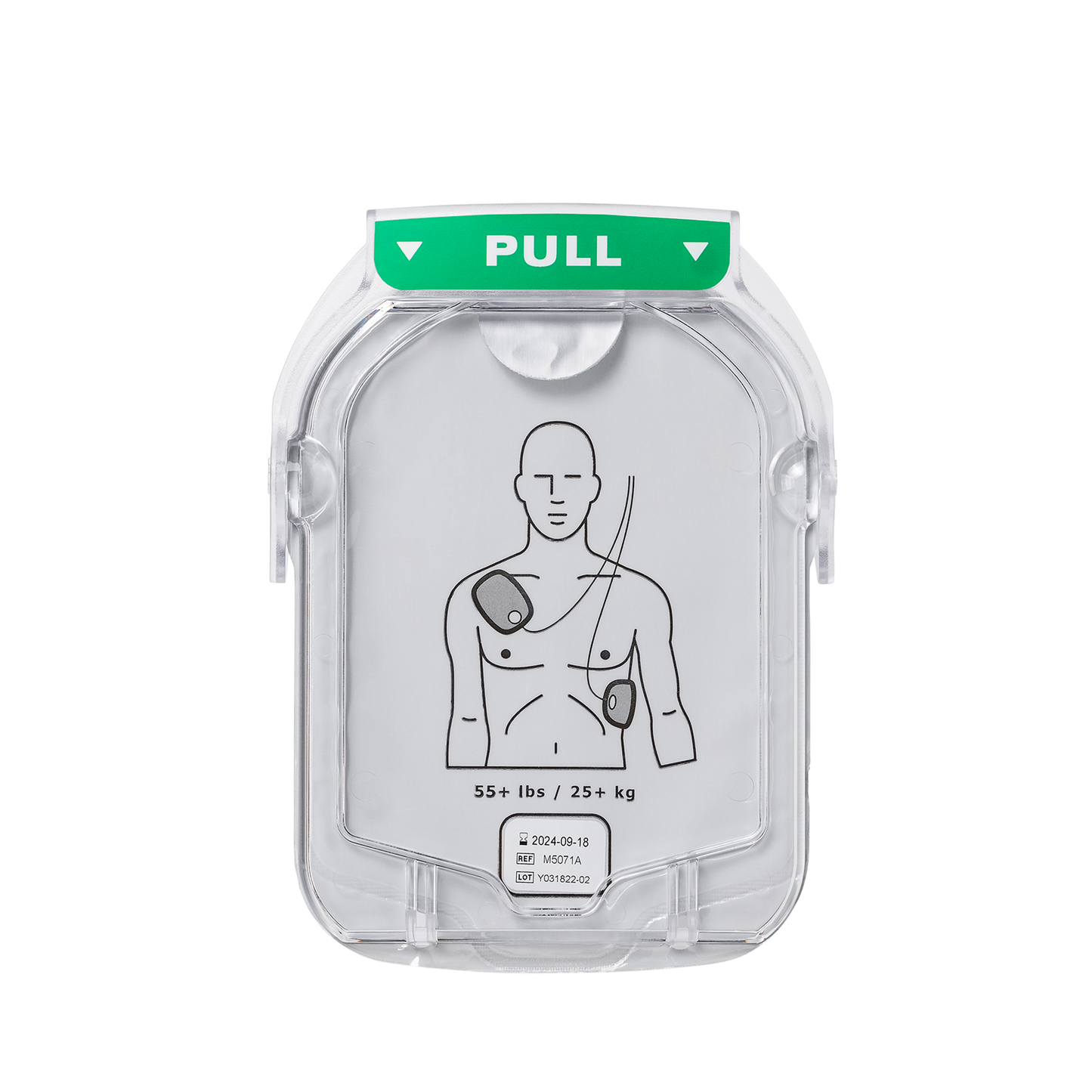
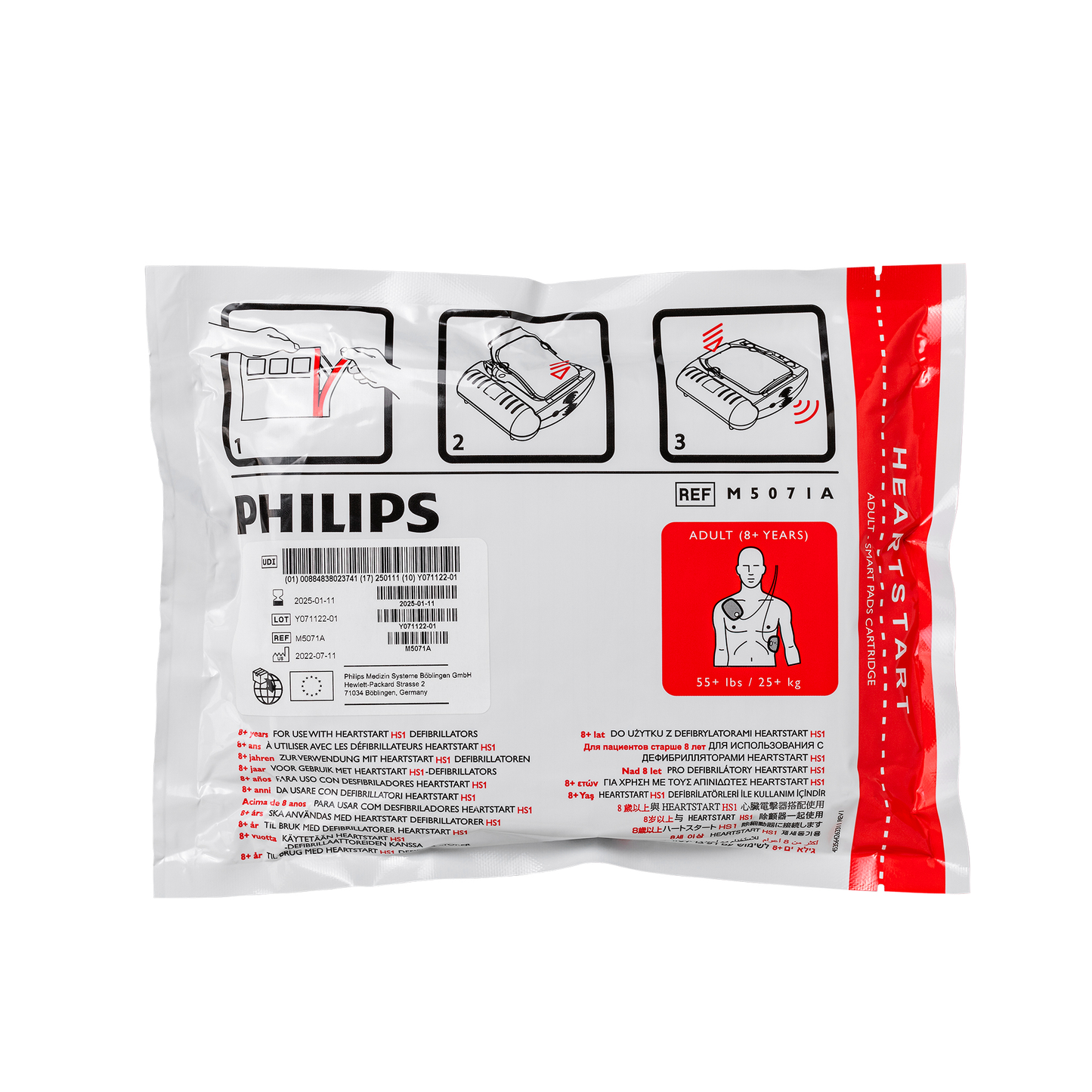
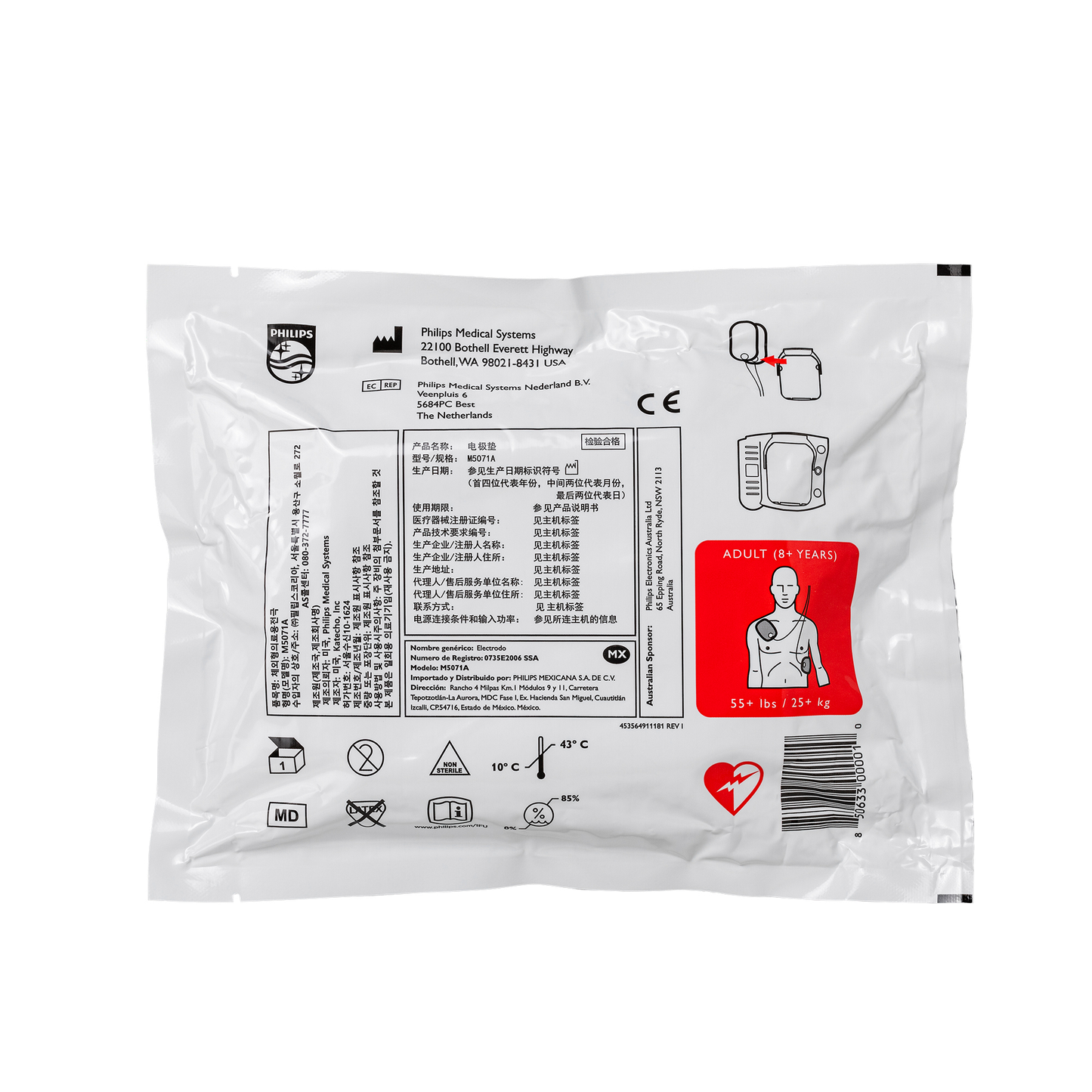
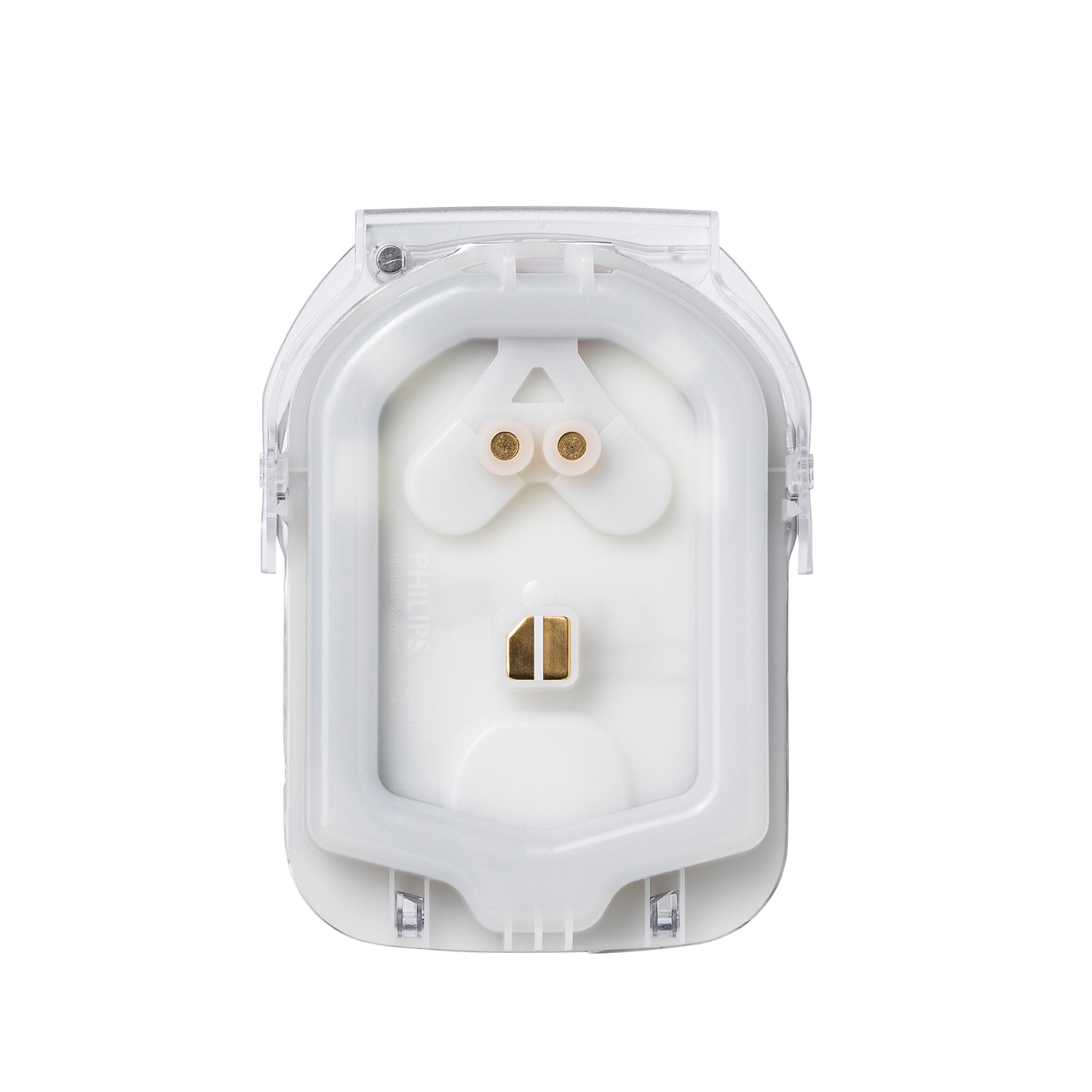
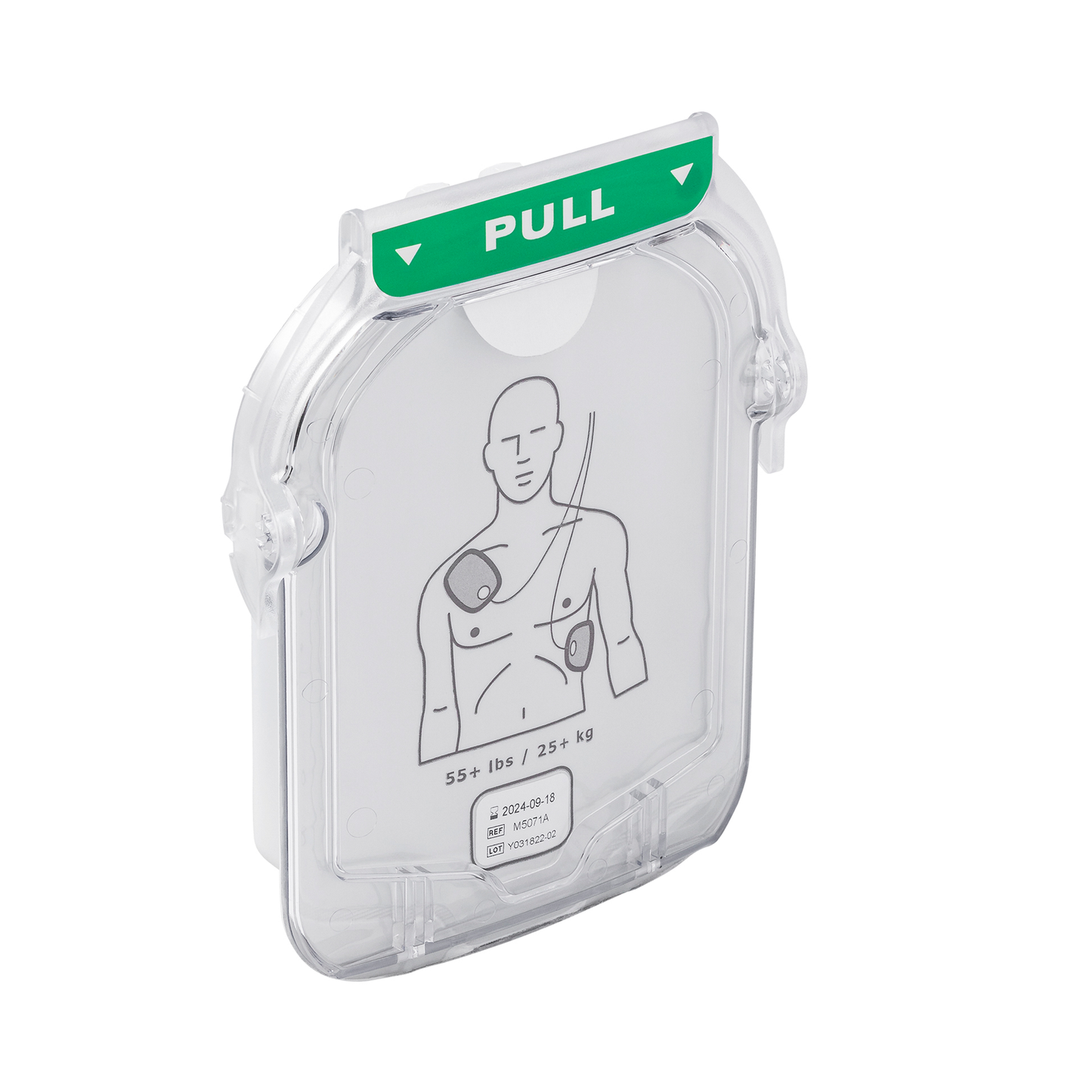
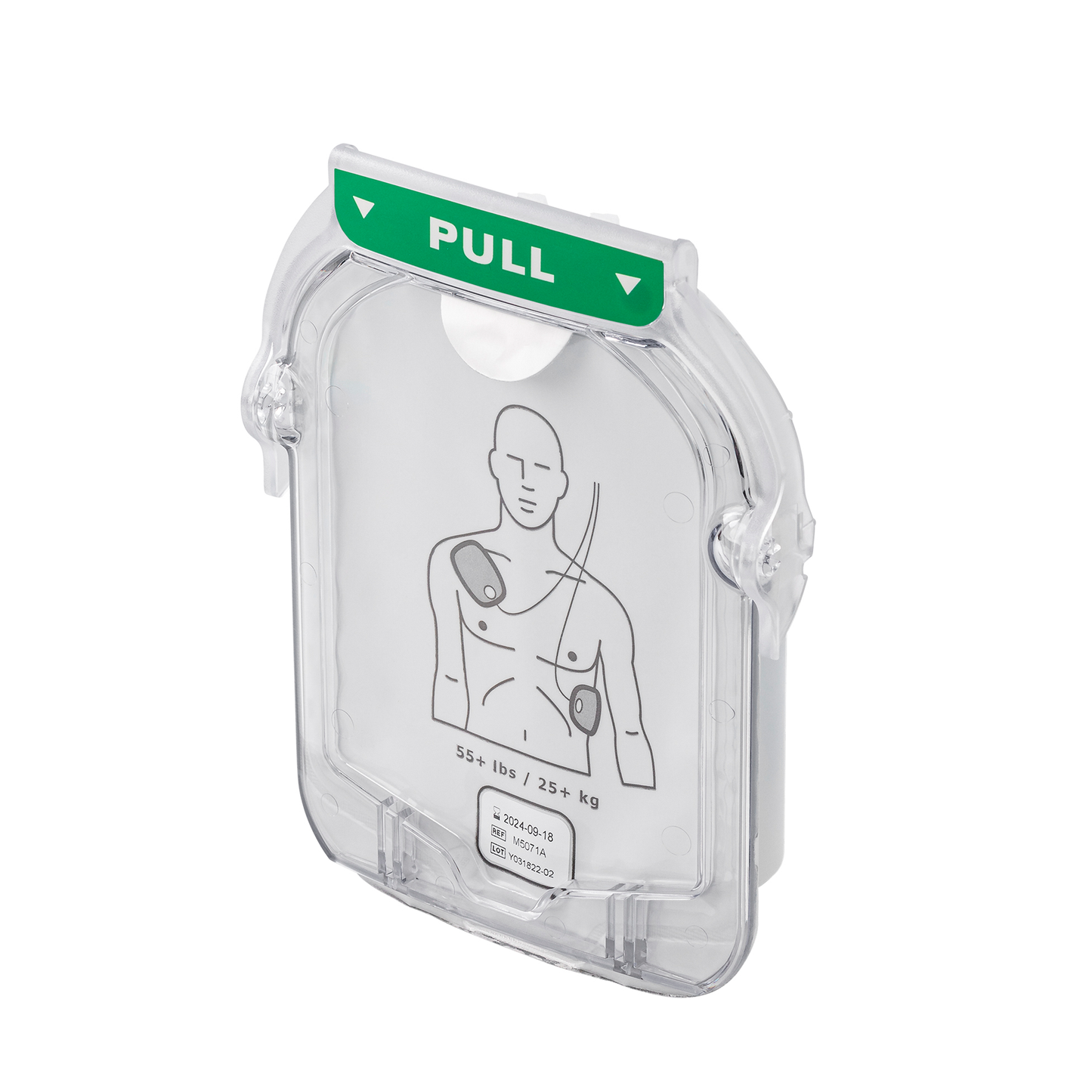


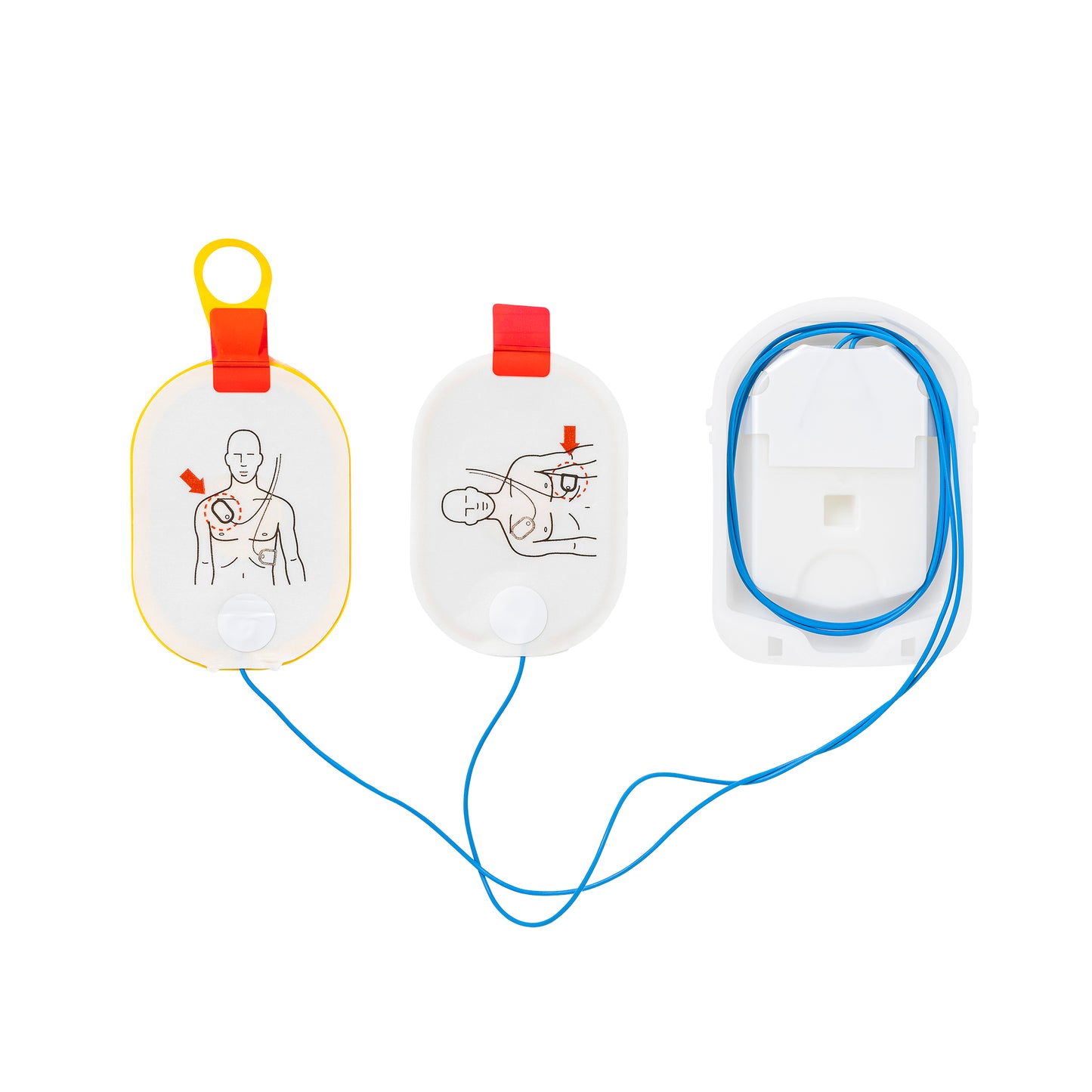
Electrode pads are a key component when it comes to saving the life of someone who has suffered a sudden cardiac arrest.
They help deliver the shock to the patient and need to be in perfect condition prior to treatment in order to work as effectively as possible. Before use, they are protected in a plastic casing enabling them to guard against dust and water damage.
Key features
- Protective packaging ensures the electrode pads are clean and secure prior to use
- Pre-connected by design, which means the AED can detect and evaluate the pads once connected and until they are required
- Clear and bold images help the untrained first responder to place the electrode pads in the correct position
- Once placed on the patient, super stick adhesive ensures the pads do not move during treatment
- Shelf life of up to 2 years before they will need replacing if remain unused
How to use
Once attached to the patient, following the visual aid instructions on the rear of the pads, the electrodes will begin to analyse the heart rhythm of the patient.
This information is then monitored by the AED, which will determine if treatment is advised, this will only occur if one of two conditions is present within the heart; VF (ventricular fibrillation) or VT (ventricular tachycardia).










